Keir Starmer's first shadow cabinet
Following his election as leader of the Labour Party on 4 April 2020, Keir Starmer conducted an extensive reshuffle of the shadow cabinet.
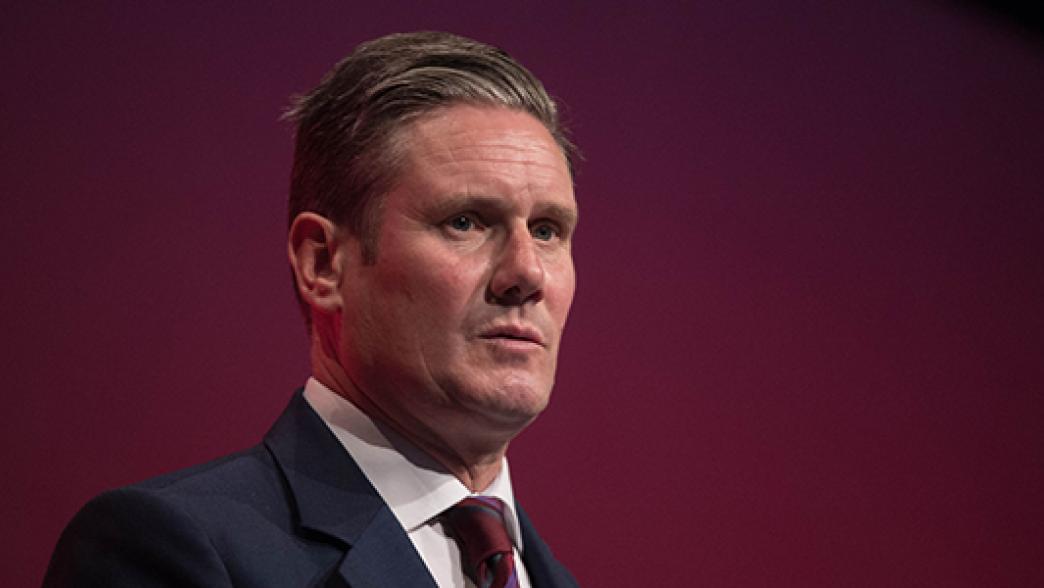
This explainer was last updated following the 2020 shadow cabinet reshuffle. An updated explainer on the shadow cabinet can be found here.
Following his election as leader of the Labour Party on 4 April 2020, Keir Starmer conducted an extensive reshuffle of the shadow cabinet.
How many shadow cabinet members served in Jeremy Corbyn’s last shadow cabinet?
Eighteen of the 32 shadow cabinet ministers appointed by Keir Starmer did not serve in the previous shadow cabinet. Some of the most senior positions were taken by newcomers: Anneliese Dodds replaced John McDonnell as shadow chancellor and Nicholas Thomas-Symonds succeeded Diane Abbott as shadow home secretary.
Who kept their shadow cabinet jobs?
Six shadow cabinet members retained the same roles from the Corbyn era. Jonathan Ashworth remained shadow secretary of state for health and social care. This appointment provided continuity as Starmer’s first opposition frontbench prioritised scrutiny of the government’s response to the coronavirus pandemic. Valerie Vaz remained shadow leader of the House of Commons – another position where experience was prized as MPs and parliamentary authorities considered new ways to run parliament during the crisis.
Cat Smith remained shadow minister for young people and voter engagement. Nick Brown and Tommy McAvoy continued as chief whips in the Commons and Lords respectively. Luke Pollard also retained his role as shadow secretary of state for the environment, food and rural affairs. He was only appointed to the position in January 2020, replacing Sue Hayman, who lost her seat in the December 2019 general election.
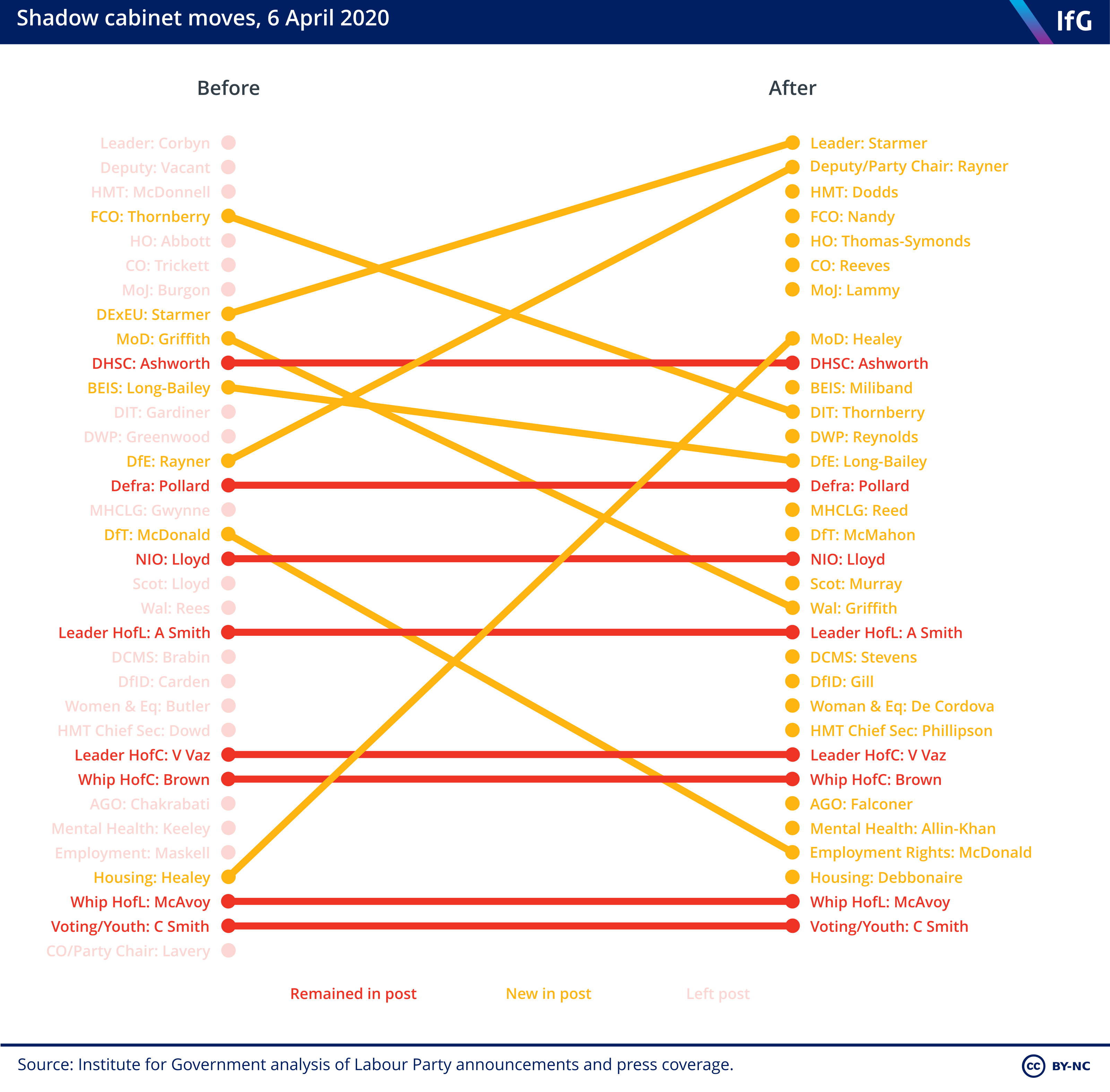
Did Keir Starmer reward his supporters in the Parliamentary Labour Party?
Starmer received nominations from a large proportion of the Parliamentary Labour Party and was able to give many of the shadow cabinet positions to his backers. This marked a change from 2015, when Corbyn struggled to gain the required 35 PLP nominations to get on to the ballot, securing just 36. As a result, only a quarter of Corbyn’s first cabinet in 2015 had backed him for the leadership, while over half of the new cabinet backed Starmer in 2020.
The majority of Starmer’s shadow cabinet who were able to nominate a candidate in 2015 backed Andy Burnham.
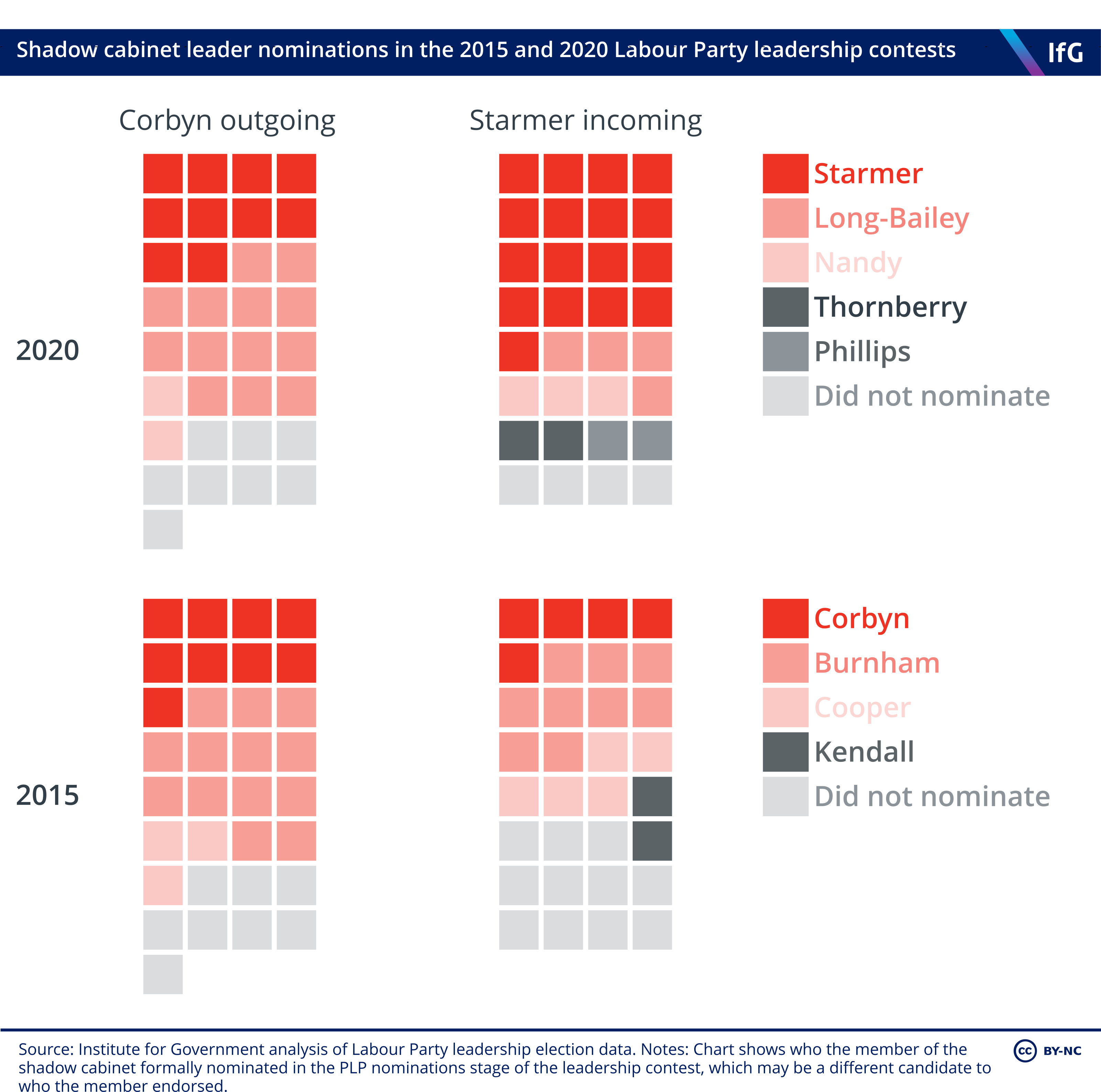
What roles have been given to the defeated leadership candidates?
Starmer gave senior positions to leadership rivals: Rebecca Long-Bailey became the new shadow secretary of state for education and Lisa Nandy shadow foreign secretary. In total, however, only seven members of the shadow cabinet backed Nandy or Long-Bailey.
Emily Thornberry, who ran for leader but failed to make it onto the ballot, remained in the shadow cabinet, moving from the foreign affairs to international trade brief. She received two nominations from within Starmer’s first shadow cabinet – from Nia Griffith and herself. Jess Phillips, another contender for the leadership who dropped out early in the contest, received two nominations from Starmer’s first shadow cabinet.
How much parliamentary experience did Starmer's first shadow cabinet have?
Starmer’s first shadow cabinet had less parliamentary experience than the previous one under Corbyn's leadership. Starmer’s shadow cabinet had an average of 9.8 years’ experience as MPs, compared to 12.2 for Corbyn’s cabinet. Around two-thirds of Starmer’s shadow cabinet entered parliament in either the 2010 or 2015 general elections. Nick Brown was the longest-serving MP in the shadow cabinet, and the only one to have entered parliament before 1997. He served as government chief whip in 2008–10 and became shadow chief whip in 2016.
Starmer himself only entered parliament in 2015. His predecessor, Jeremy Corbyn, had been an MP for 32 years before becoming leader; Tony Blair for 11; Gordon Brown for 23. Ed Miliband had also been in parliament for just five years when he became leader in 2010, but in this time had acquired governmental experience as secretary of state for energy and climate change.
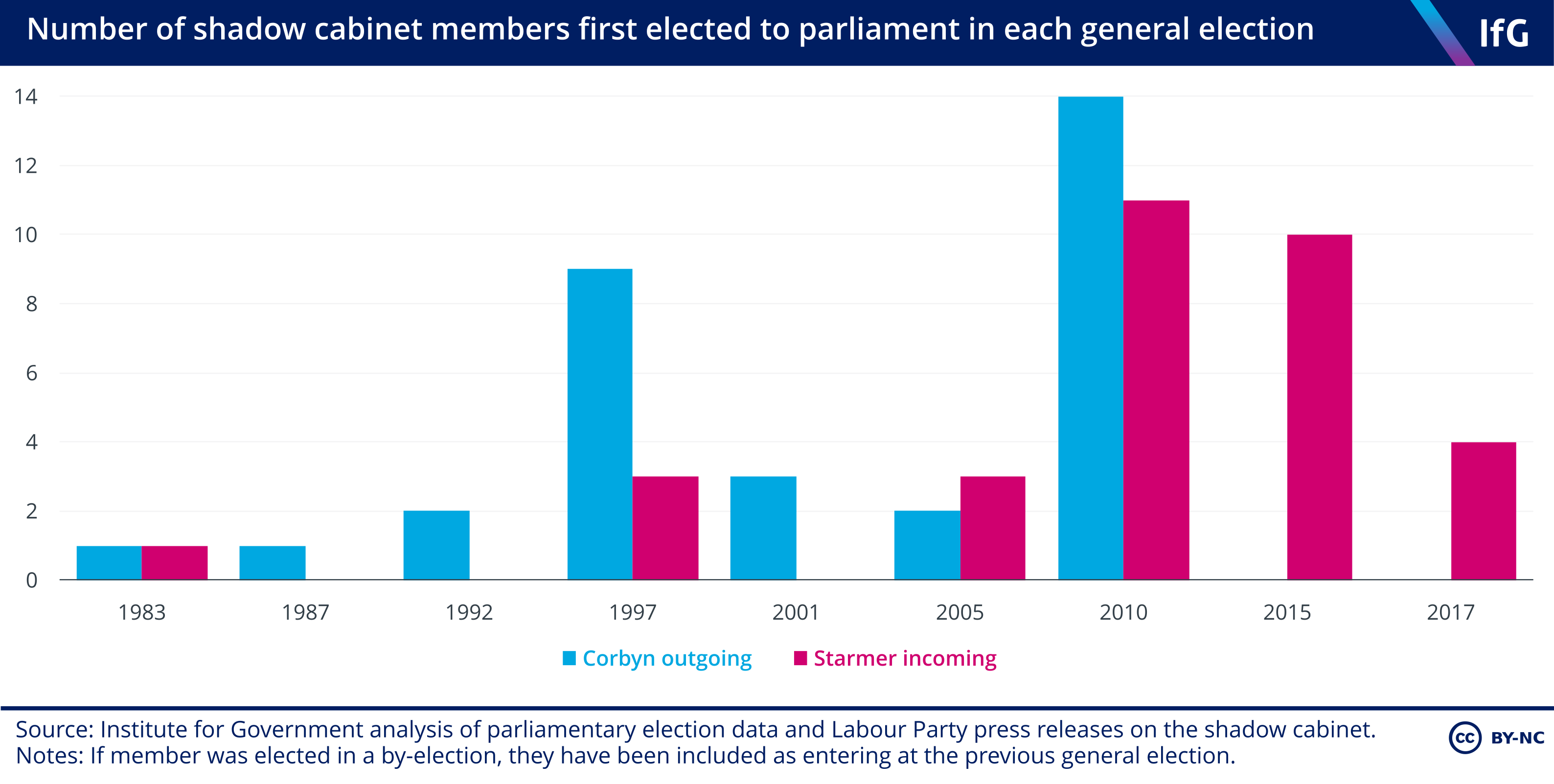
The most senior figures in Starmer’s first shadow cabinet had less frontbench experience than Corbyn’s cabinet in 2015. Anneliese Dodds, Starmer’s first shadow chancellor, only entered parliament in June 2017, although prior to this she was a member of the European Parliament from 2014–17. In contrast to her predecessor, John McDonnell, she had some shadow ministerial experience as shadow financial secretary to the Treasury. Corbyn himself had never held a government or shadow ministerial role before becoming leader, despite being an MP since 1983.
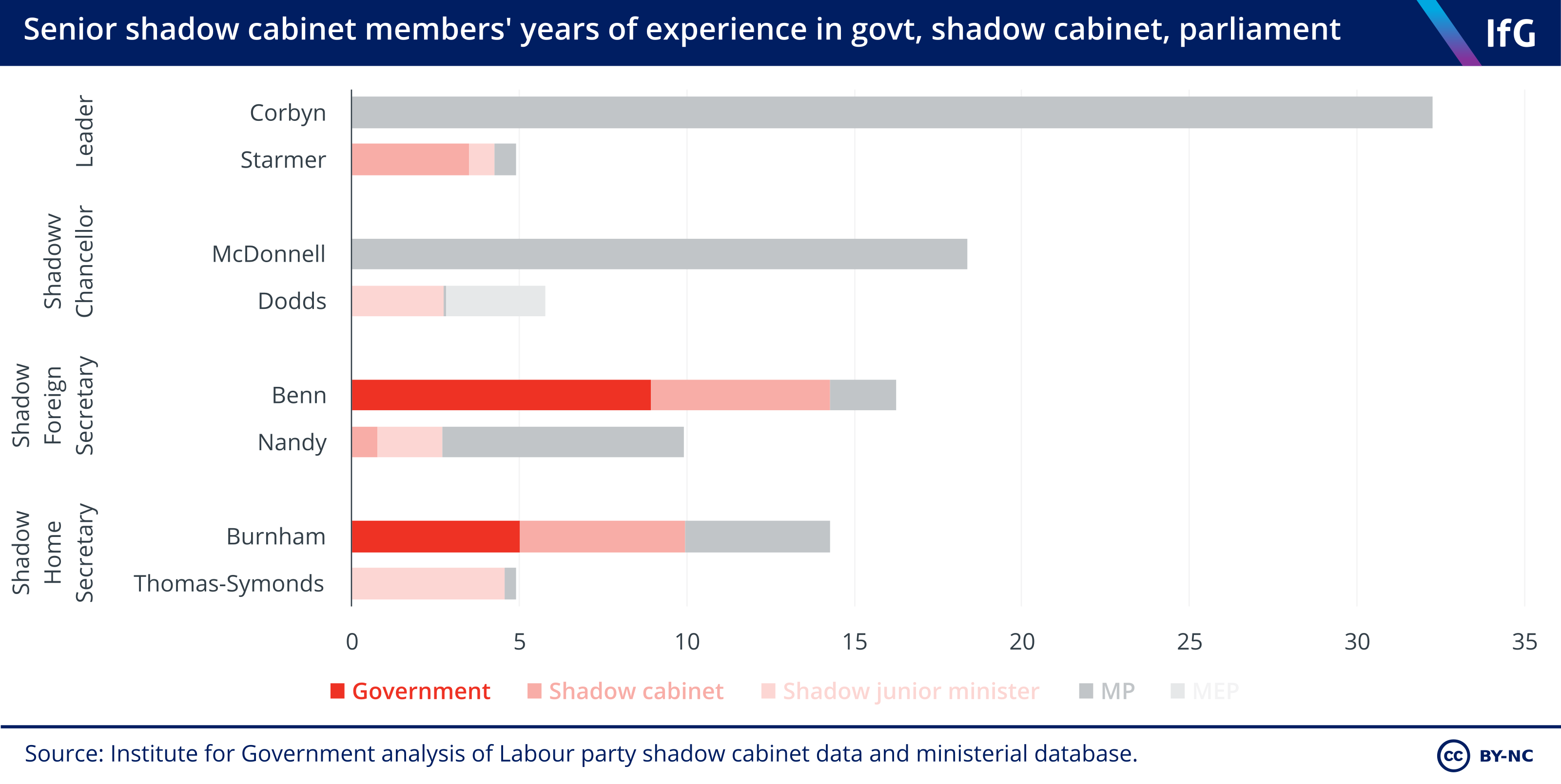
Did any members of Keir Starmer's first shadow cabinet serve in government?
As Labour had been in opposition for 10 years when Starmer took over, just five of his first shadow cabinet had experience of serving in government: Nick Brown (chief whip under Gordon Brown), John Healey (minister of state for housing and planning under Brown), Charlie Falconer (lord chancellor under Tony Blair), David Lammy (minister for culture under Blair, and innovation and skills under Brown), and Ed Miliband (secretary of state for energy and climate change under Brown).
By contrast, 12 members of Corbyn’s first shadow cabinet in 2015 had some experience serving in government. The proportion of Starmer’s first cabinet with experience as a senior shadow minister was similar to that of Corbyn’s cabinet in 2015. However, a higher proportion of the shadow cabinet had experience of a relevant portfolio, having either already served in this position, or as a government or shadow junior minister in the same department.
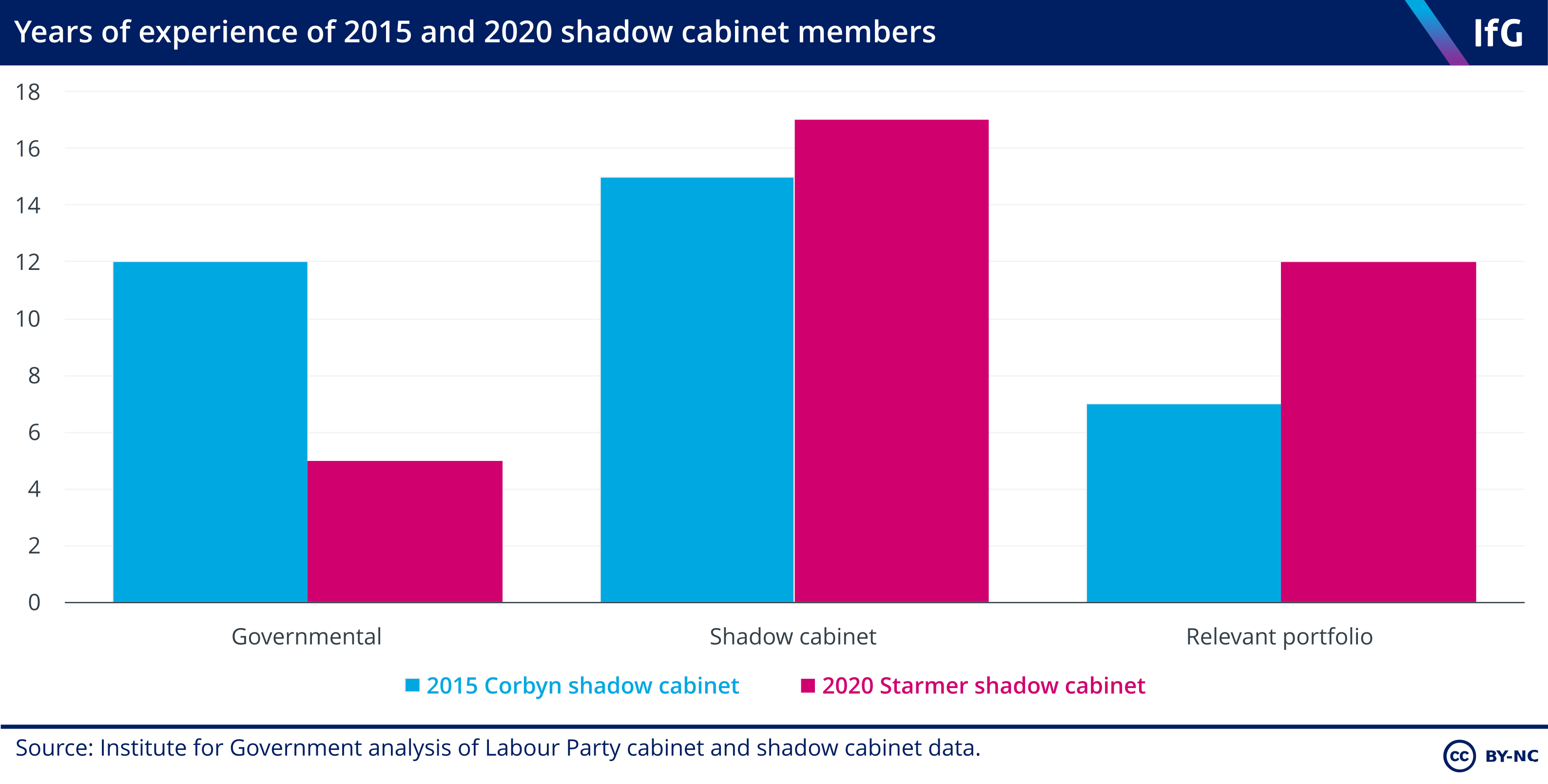
How diverse was Starmer's first shadow cabinet?
The parliament elected in 2019 is the most diverse in history and Starmer’s first shadow cabinet was also more ethnically diverse than its predecessor. There were seven Black, Asian and minority ethnic (BAME) MPs in the shadow cabinet, or 22% of the total, up from 12% in the previous shadow cabinet. This compares with 15% BAME representation in the cabinet.
Over 50% of Starmer’s first shadow cabinet was female, compared with 45% of the previous shadow cabinet and just 27% of the cabinet at the same point. Dodds was also the first woman ever to serve as either chancellor or shadow chancellor.
- Political party
- Labour
- Position
- Leader of the opposition
- Public figures
- Keir Starmer
- Publisher
- Institute for Government